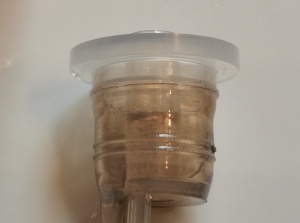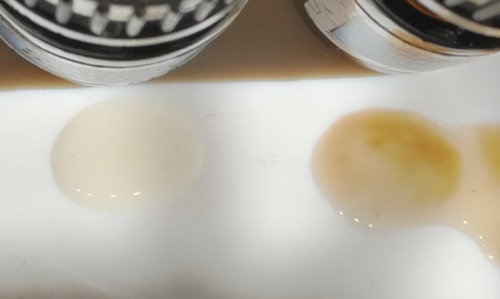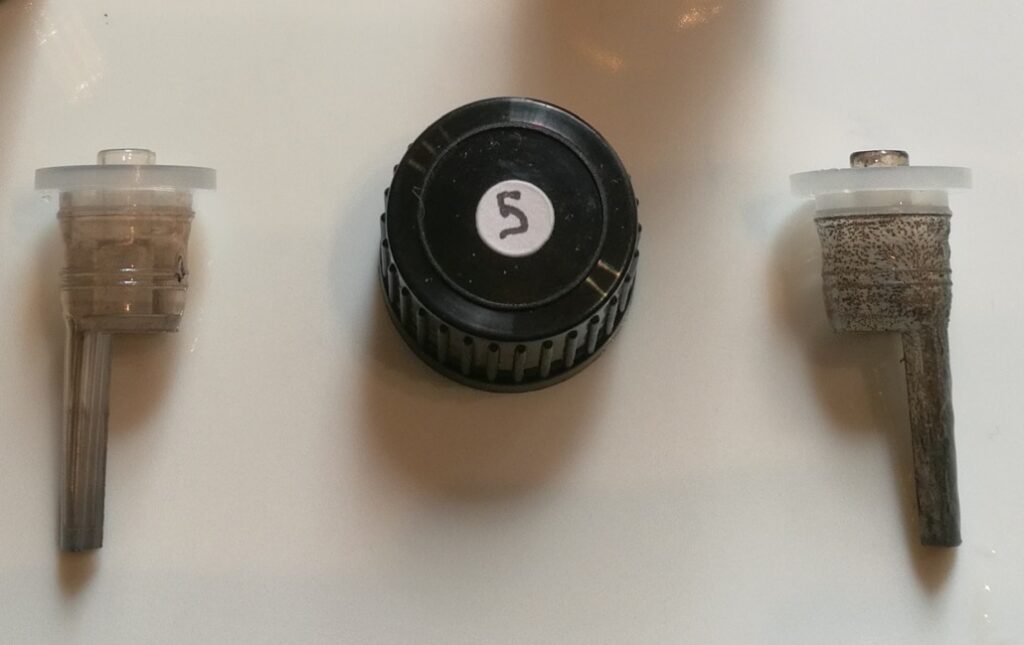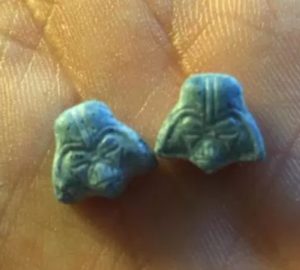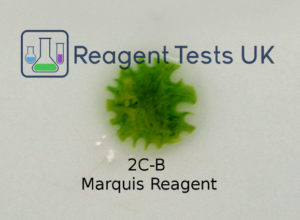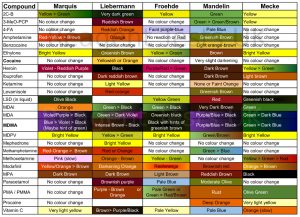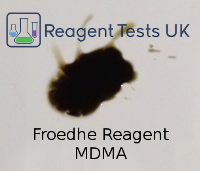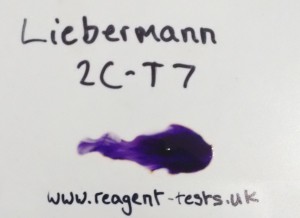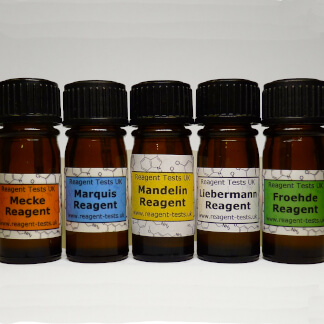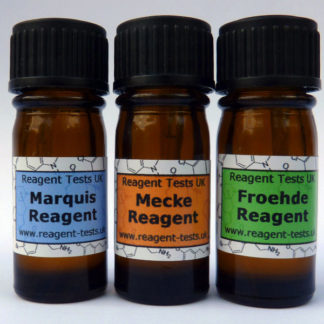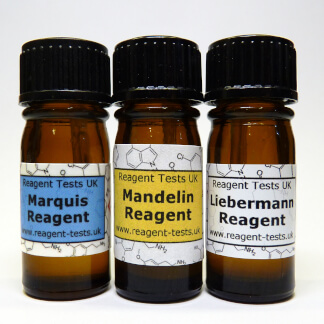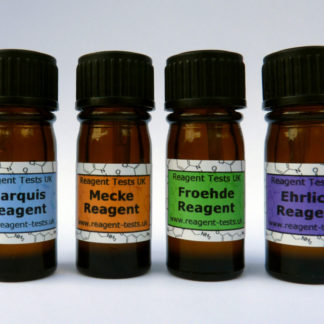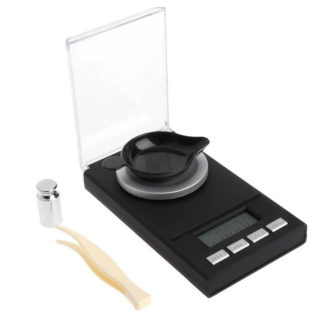Some suppliers of reagent tests provide reaction charts which show methylone as a possiblity. Often, it is the only yellow option on the chart for the marquis reagent. If the only reagent used is the marquis reagent then it’s reasonable that a person would assume they have methylone. This is a dangerous assumption because in 2021, it’s not methylone. You can get the kit to prove this here, but read below to understand exactly why it’s so unlikely.
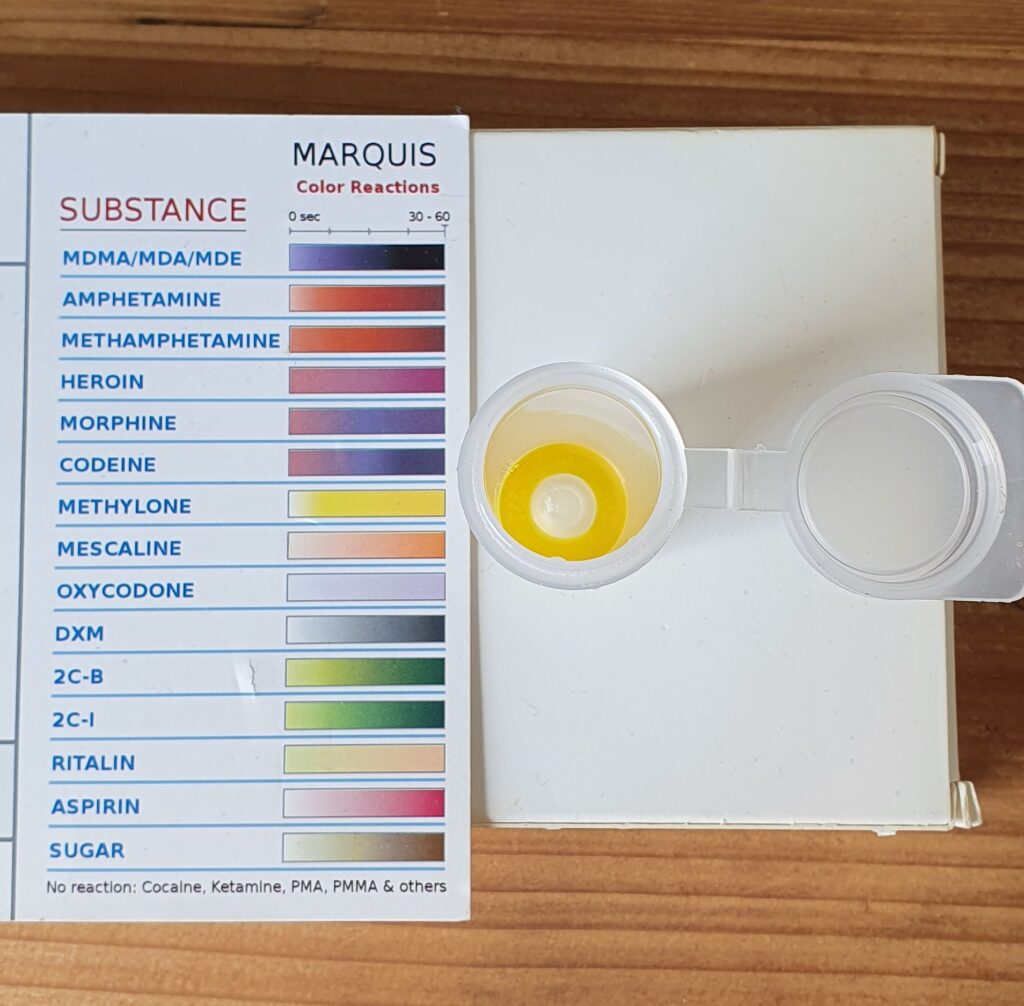
It is very unlikely because methylone:
- is banned at UN level (so no legal lab would produce it, same penalties as MDMA for illegal labs),
- is not easier to make than MDMA,
- demands lower prices in bulk,
- sells for higher prices to the niche enthusiasts, it is quite sought after. So if you are a small lab producing small amounts you could get more money by selling it as methylone,
- is less potent than MDMA so you need to smuggle larger volumes of drug,
- has not really been seen on the market since 2016, it’s very rare.
If it was methylone (very unlikely) then methylone is very similar risk to MDMA but with less lovey effects and much shorter duration. The whole reason we take issue with this misleading reaction chart is because people might take this substance thinking it’s methylone and that they are happy with the risks being similar to that of MDMA itself.
So what are these substances if methylone is so unlikely, and how can we be sure?
N-ethylpentylone and eutylone are more common now and much more likely to be the culprits here because:
- They’re quite potent, so easier to smuggle and cheaper to make
- They’re not scheduled globally, so grey-market labs in asia can produce legally at huge scale (N-ethylpentylone was scheduled in 2020, so this only applies to eutylone now)
- They also have very similar appearance to MDMA in crystal form (many drugs do, to be fair)
- They are very commonly seen on the market since around 2018 when more desirable drugs were banned
- They have the same yellow reaction with the marquis reagent (but can be very easily distinguished with the froehde reagent. This is one great reason why it’s always essential to test with more than one reagent)
We wrote an article on detecting N-ethylpentylone in 2018 because it was so common and causing so many problems. https://www.reagent-tests.uk/blog/how-to-detect-pentylone-and-n-ethylpentylone-sold-as-mdma/
The problem with these nasty compounds is that they lull people into a false sense of security because they feels kind of adequate enough at first, enough to make someone think they just have “rubbish MDMA”. The good effects last about 2 hours, so people take more.
But each redose adds about 6 hours onto the time a person can’t sleep for, so party for 10 hours and then can’t sleep for 30 hours after that. The mixture of residual dopamine release and insomnia then has the ability to cause intense paranoia and anxiety and in vulnerable people (about 1 in 20 cases, particularly at festivals where people dose 2 nights in a row) that develops into temporary psychosis which doesn’t subside until the person can sleep. This often requires medical intervention.
So what’s the solution to this? Always test with more than one reagent. It massively increases confidence in the accuracy of the result and completely avoids this confusing situation.

